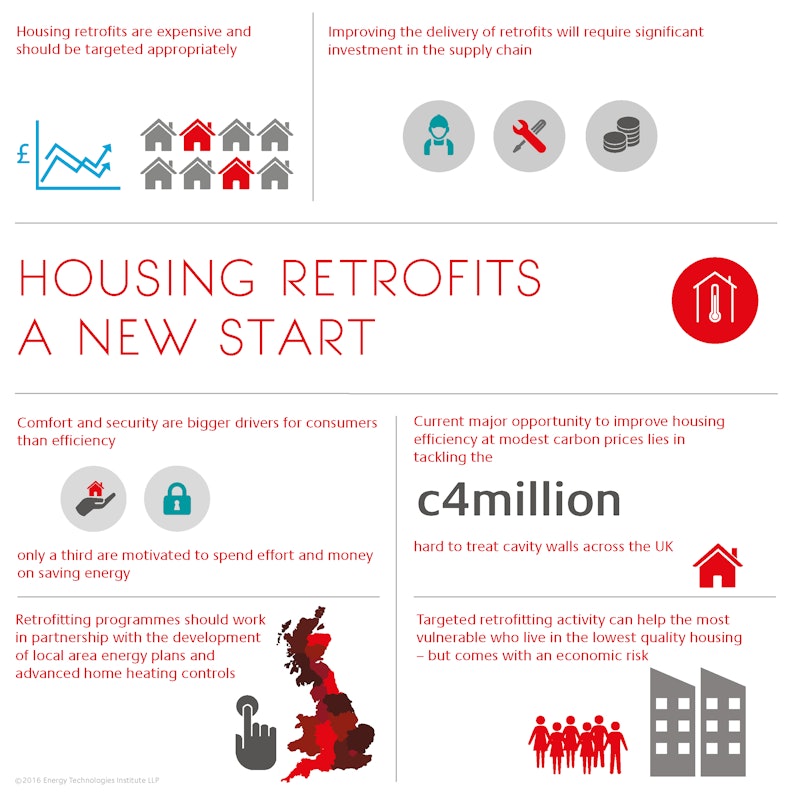Housing Retrofits - A New Start

Andrew Haslett
Chief Engineer
Building retrofit is part of a low carbon solution
Heating the 28 million homes in the UK accounts for17% of energy related CO2 emissions. This is dominated by space heating, with contributions from hot water and cooking. When indirect emissions from electric heating are included, 20% of UK emissions come from domestic heat.
- Improving the thermal efficiency of significant parts of the existing UK housing stock over the next thirty years is an important part of a cost-effective UK decarbonisation strategy but cannot substitute for decarbonising the supply of energy to buildings.
- Uptake could be increased by making efficiency improvements an integral part of improving the amenity and value of the dwellings, rather than a series of independent measures.
- A focus on the interests of the owners and occupiers of the dwellings and the performance of the supply chain in delivering retrofit to them is critical to progress.
- Efficiency measures can provide cost-effective carbon savings and improve people’s comfort and living experience considerably. Although cost savings are rarely enough to justify the work at current energy prices, there is nevertheless a strong case for improving the quality of the UK housing stock, with energy being one element in this.
- There are significant opportunities to improve the performance ofa traditional business-as-usual approach to housing retrofits. The culture, structure and practices of large parts of the supply chain will need non-trivial changes and investment to deliver this.
- A coherent long-term strategy that recognises the underlying economics will enable more entrepreneurial businesses to invest in the changes required to deliver more cost-effective, high performing retrofits. This will enable progress towards energy, poverty, health and housing goals.
Progress with retrofits will depend on recognising that efficiency savings are a very weak driver and that some combination of improved comfort and amenity, improved supply chain performance and mechanisms that mandate or reward carbon savings will be required, both in the social and able-to pay sectors. Targeting an appropriate mix of measures on the most promising combinations of housing and occupants is more likely to be a successful “sell” than a blanket approach.
Although very deep retrofits are technically feasible, their cost could potentially be similar to the cost of rebuilding the entireUK housing stock (in excess of £2tn). A coherent whole systems approach to meeting UK climate change targets suggests that amore measured expenditure of £10bn of private and public funds over the next ten years would provide a platform that would enable investment of roughly £100bn out to 2050. Developing the platform would ensure that this money would be well spent as part of an overall housing and energy strategy.

Andrew Haslett
Chief Engineer
Andrew Haslett joined ETI as Strategy Director in April 2008 and was appointed Chief Engineer in January 2014. He is a Fellow of the Royal Academy of Engineering, the Institution of Chemical Engineers and the Royal Society for the encouragement of Arts, Manufactures and Commerce.
